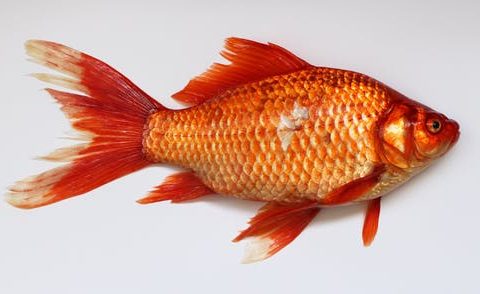As a loving and responsible pet owner, it’s essential to understand the ins and outs of pet surgery. Whether your furry friend needs a routine procedure or something more complex, being knowledgeable about the process will help you provide the best care possible for your pet. In this comprehensive guide, we’ll cover common pet surgeries, how to prepare for a surgical procedure, what to expect during and after the surgery, potential complications, and the costs involved—all you need to be an informed pet parent.
Common Pet Surgical Procedures
Spay/Neuter Surgeries
Spaying and neutering are widespread surgical procedures that serve to prevent pet overpopulation and offer numerous health benefits. Spaying involves removing the ovaries and uterus of a female pet, while neutering entails the removal of the testicles in males. Both procedures result in decreased aggression, reduced roaming tendencies, and lowered risk of certain cancers.
Orthopedic Surgeries
Orthopedic surgeries deal with the musculoskeletal system, including bones, joints, ligaments, and muscles. These procedures are common in pets with injuries or conditions like hip dysplasia, luxating patella, or cruciate ligament tears. Some typical orthopedic surgeries include fracture repair, joint replacement, and ligament reconstruction.
Soft Tissue Surgeries
Soft tissue surgeries involve organs, skin, and other non-bony tissues. Examples include tumor removals, gastrointestinal surgeries, and hernia repairs. These procedures can address a variety of health concerns, from lumps and bumps to internal organ issues.
Dental Surgeries
Dental surgeries are common in pets with dental issues like periodontal disease, broken teeth, or malocclusions. Extractions, gum surgeries, and root canals are examples of dental procedures that can help maintain your pet’s oral health.
Eye Surgeries
Eye surgeries address various eye conditions such as cataracts, entropion (inward turning eyelids), and cherry eye (prolapsed tear gland). These procedures help preserve your pet’s vision and improve their quality of life.
Preparing Your Pet for Surgery
Veterinary Consultation
The first step in preparing your pet for surgery is to discuss the procedure with your veterinarian. They will provide essential information about the process, risks, and expected outcomes. Your pet will need to undergo a thorough pre-surgical examination to identify any potential health issues that may affect the surgery. Pet routine exams are an essential part of this process, allowing your veterinarian to monitor your pet’s overall health and identify any symptoms of underlying disease. Staying on top of your pet’s regular checkups can help detect potential issues early on, which might avoid the need for surgery altogether. Feel free to contact them through websites like https://www.petdoctorsofamerica.com/site/veterinary-services-jacksonville/cat-dog-routine-exams.
Pre-surgical Exams and Tests
In addition to the exam, your veterinarian may run blood tests, take x-rays, or perform other diagnostic tests. These tests help determine your pet’s overall health, ensuring they are fit for anesthesia and surgery.
Pet Fasting and Medication Guidelines
Fasting is usually required before surgery to reduce the risk of vomiting and aspiration. Your veterinarian will provide specific guidelines about how long your pet should fast and any necessary adjustments to their medications.
Pet Surgery Consent Forms
Before any surgery, you will need to sign a consent form outlining the procedure, risks, and costs involved. Make sure to carefully review and ask any questions before signing.
Understanding Pet Anesthesia
Types of Anesthesia
General anesthesia renders your pet unconscious during a surgical procedure, while local or regional anesthesia numbs a specific area of the body. General anesthesia is often used for more invasive surgeries, while local anesthesia may be appropriate for minor procedures or dental work.
Administering Anesthesia Safely
Administering anesthesia carries some risks, but veterinary professionals take all precautions to minimize these risks. This includes closely monitoring your pet’s vital signs, administering IV fluids, and using safe anesthetic agents.
Pet Sedation and Monitoring
Sedatives are often used to help calm a pet before surgery, making the process less stressful for them. Throughout the procedure, a veterinary technician will carefully monitor your pet’s heart rate, blood pressure, breathing, and other vitals to ensure their safety.
Risks and Complications Associated with Pet Anesthesia
Like any medical procedure, anesthesia carries some risks, such as adverse reactions or complications. However, the chances of such events occurring in modern veterinary medicine are low due to the advancements in anesthetic monitoring and medications.
The Surgical Procedure: What to Expect
Pre-surgical Preparation
Before surgery, your veterinarian will thoroughly clean and prepare the surgical site to minimize the risk of infection. Additionally, your pet may require IV access for fluid and medication administration.
Surgical Techniques Used by Veterinarians
Veterinarians use various surgical techniques, depending on the procedure and the pet’s specific needs. These techniques range from traditional open surgeries to minimally invasive approaches, like laparoscopy and arthroscopy.
Intraoperative Monitoring and Care
Throughout the surgery, veterinary professionals continuously monitor your pet’s vital signs, administer medications as needed, and address any complications that may arise.
Post-Surgery Pet Care
Immediate Post-Operative Care
After surgery, your pet will be closely monitored in the recovery area, where veterinary staff will ensure they wake up safely from anesthesia and address any pain or discomfort. It’s imperative to closely follow your veterinarian’s discharge instructions regarding medications, activity restrictions, and home care.
Pain Management for Pets
Managing your pet’s pain after surgery is a priority. Your veterinarian will recommend appropriate medications to keep your pet comfortable and ensure a smooth recovery.
Monitoring Your Pet’s Recovery at Home
Your role as a pet parent is crucial in your pet’s recovery process. Keep a close eye on the surgical site for any signs of infection, watch for any changes in behavior or appetite, and follow all post-operative care instructions provided by your veterinarian. Pet owners often look for professional grooming services to make their pets feel comfortable and look their best. If you’re looking for pet grooming near Jacksonville, FL, there are numerous options available for various grooming and bathing services catering to your pet’s specific needs and preferences.
Post-operative Medications and Wound Care
Administering medications as prescribed and ensuring proper wound care are essential in helping your pet heal after surgery. Your veterinarian will provide detailed instructions on medication administration and wound care techniques.
Follow-up Appointments with Your Veterinarian
Follow-up appointments are crucial to assess your pet’s recovery progress and address any concerns or complications. Be sure to schedule and attend these appointments as recommended by your veterinarian.
Possible Surgical Complications and Risks
Common Pet Surgical Complications
Some potential complications include infection, bleeding, reaction to anesthesia or medications, and issues with internal sutures or surgical implants. Although these complications are rare, it’s crucial to be aware of them and monitor your pet closely during recovery.
Risk Factors Affecting Pet Surgery Outcomes
Various factors can affect surgery outcomes, including your pet’s age, overall health, and the specific procedure. Your veterinarian will consider all relevant risk factors before performing any surgery and discuss these with you.
Knowing When to Contact Your Veterinarian
If you notice any concerning signs during your pet’s recovery, such as increased pain, swelling or discharge at the incision site, vomiting, or changes in appetite or behavior, contact your veterinarian promptly. They can provide guidance and address any issues to ensure your pet’s recovery stays on track. For more information about pet surgery or any other veterinary services, don’t hesitate to reach out to your local veterinary clinic through their contact page.
The Cost of Pet Surgery
Factors Influencing Pet Surgery Cost
The cost of pet surgery varies depending on factors such as the complexity of the procedure, the anesthesia used, your geographical location, and the specific veterinary clinic. It’s essential to discuss the costs involved with your veterinarian before surgery and explore financial assistance options if necessary.
Pet Insurance Coverage for Surgeries
Pet insurance can help cover some of the costs associated with surgery. It’s crucial to research different insurance providers to find the best coverage for your pet’s specific needs.
Payment Options for Pet Surgery Expenses
Many veterinary clinics offer payment plans or work with third-party financing companies to help pet owners manage surgical expenses. Discuss these options with your veterinarian to find the best solution for your financial situation.
Conclusion
Understanding the intricacies of pet surgery is an essential aspect of being a responsible pet owner. By arming yourself with knowledge and staying on top of your pet’s routine veterinary care, you can provide the best possible support for your furry companion—during surgery and beyond. With proper preparation, attentiveness, and love, you’ll help your pet enjoy a comfortable life.






